While October is the traditional time of the year for Stone-free wordage on THC, I thought I’d publish this piece on UoC2 add-ons kindly submitted by Martynas “JcDent” Klimas while it’s fresh. A Lithuanian pewter pusher not averse to a spot of CoH, GHPC, Regiments, Armored Brigade, and Uo2C (obviously), Martynas podcast hosts and website propriets when he’s not waging ersatz war.
“Wargame nerds have mixed feelings about Unity of Command 2. Some hate the mission timers. Others detest the RNG. Me? I’m so cool, I played the DLCs before finishing the main campaign. And when it comes to DLCs, Unity of Command 2 delivers.
A brief into the C you can DL
The main campaign put us in command of the Allied forces from the end of the African campaign to the fall of the Reich – a safe choice, meant to reel in the English-speaking audiences via their endless thirst for Normandy landings. But the DLCs zagged immediately, with the first one – Blitzkrieg – taking us all the way back to the invasion of Poland and through the rest of Germany’s early hits (and Norway).
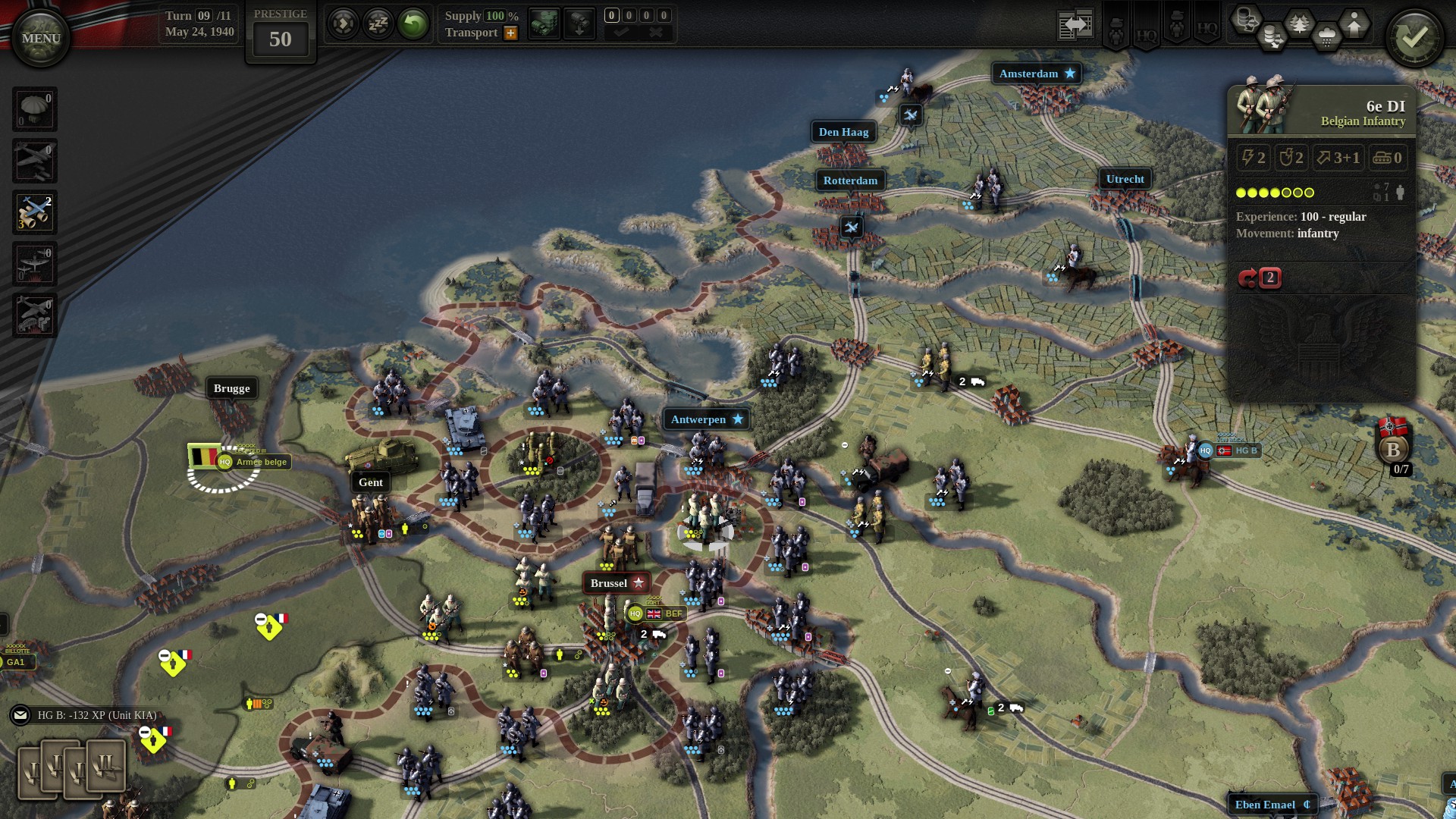
^ It’s not often that you get to beat the Dutch, Belgians, and French at the same time.
The string of DLCs would then advance mostly chronologically, from Barbarossa to Kursk. Often, you’d command the German forces, but the Soviets got some love as well. They also took a detour (in 2022), with Desert Rats allowing us to control the Commonwealth forces in their early desert adventures and Desert Fox tasking us with marshaling the Italians and Germans that beat them back. To date, the Kursk DLC is probably the largest of all, featuring separate Soviet and German campaigns.
The DLCs also showed the difference in scope. In basic Unity of Command 2, the units you control are divisions. But once in North Africa, the devs felt the need to point out that what you see are brigades at most. That’s the sort of treatment that the game usually reserved for one-off scenarios dealing with very specific actions like Invasion of Crete.
The steady evolution of craftsmanship
And that’s why the way the developers chose to depict realities of these conflicts is so fascinating. You may have heard that Germans had attrited their armor units in 1941 and that their supply transports hadn’t fared much better. In the German DLCs, you’ll get to feel it. Starting out with mighty panzer divisions that will effortlessly delete a Soviet division – or multiple – a turn, you will still take losses. The enemy will gang up on your tanks if they get in too deep. And those divisions will become rarer, and more vital in their role of crashing through the strongest sectors of the battlefield.
At the same time, you’ll discover that Russia is big. I once made a gif to illustrate just how far – multiple screens away – the Grozny objective was from my starting positions (and limited forces). Even if you can husband your supply depots perfectly, you’ll still be smacked by the decreased supply throughput quality. That’s a core mechanic, but in the main campaign, it was mostly a non issue. In the DLCs (not only Russian, but also the desert ones), you’ll see the resupply chance drop to 80% and below.
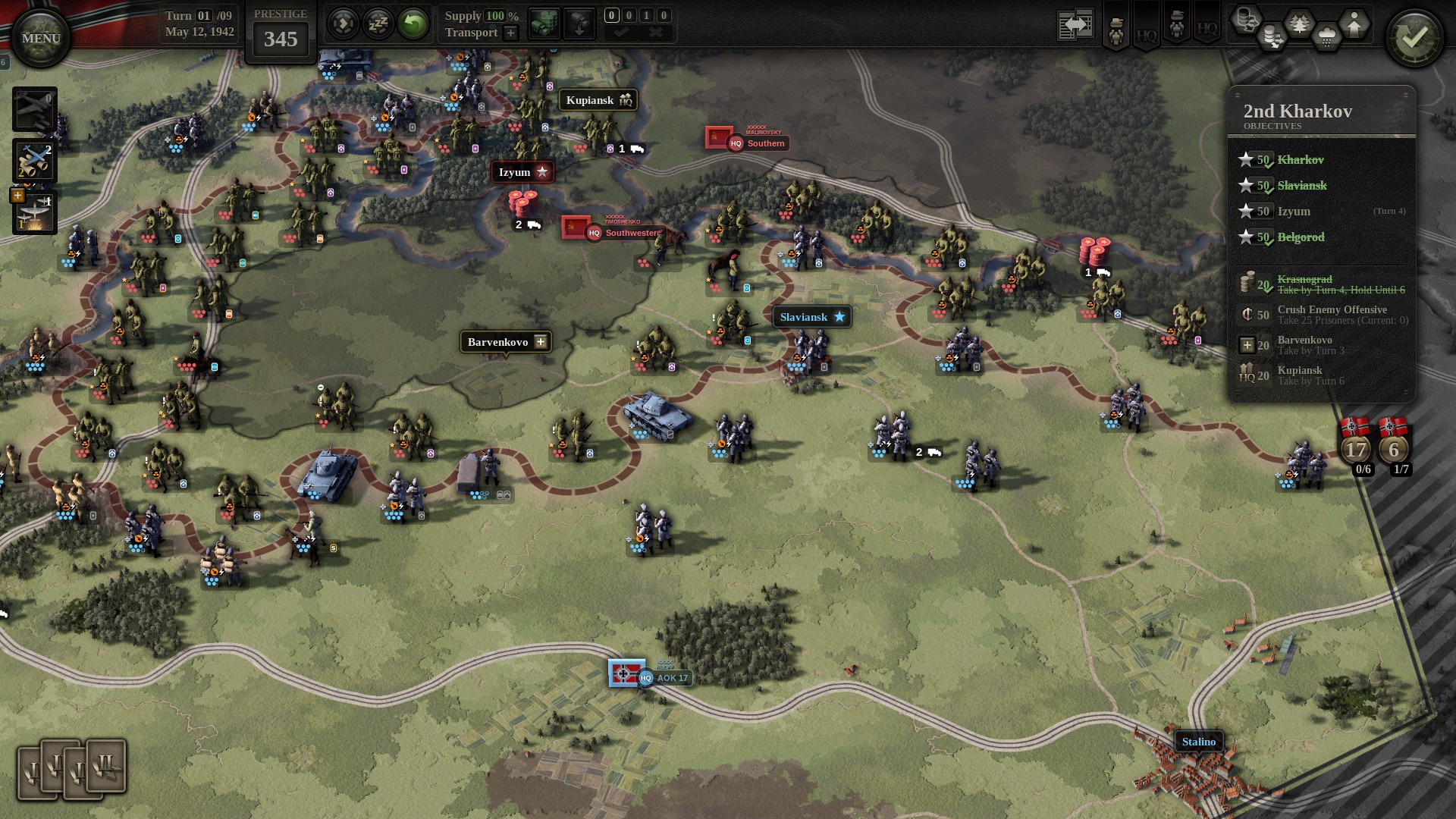
^ Some of these city names are oddly familiar…
So your panzers may be racing ahead, but even if they’re on a road and within a supply depot range, they may still start a turn unsupplied. This means using precious command points to resupply units and moving HQs closer to the front. This means fighting the land as much as you fight the armies marching on it. This means translating the truths of fighting over vast swathes of hostile ground without inventing new game mechanics or tying yourself into a pretzel trying to make simulationist mechanics conform to your gameplay.
The DLCs also tackle the Elefant in the room: Unity of Command 2, as a game, is about winning. While both the player and the AI play under roughly the same rules – supply allowing units to operate, HQs being necessary to launch special maneuvers and such – the AI definitely doesn’t get as many callins, is usually on fairly passive defense, doesn’t care about what losing units means to the campaign progression, and even the scenarios themselves don’t push it to advance.
But over four years of DLCs, the 2×2 Games has put some thought into making the player command defeat, loses and retreats. And once the AI becomes aggressive, it becomes ruthless. The most horrific feeling in Unity of Command is losing a campaign unit – not only do they carry-over from mission to mission, but they’re also often your most powerful troops. They’re naturally sent to where the fighting is thickest, and, what a coincidence! The AI’s attentions are also there.
Putting you in STAVKA’s portyanki
And this is why the first Soviet DLC – Moscow 41 – is a challenge to the very core of a Unity of Command player. As Allies and Germans, you were husbanding every least infantry division. You may only allow yourself to maybe lose a Hungarian or Italian unit that wasn’t marked as returning for later missions. Playing as the Soviets, you will learn to lose a division – maybe multiple divisions – a turn and keep on trucking.
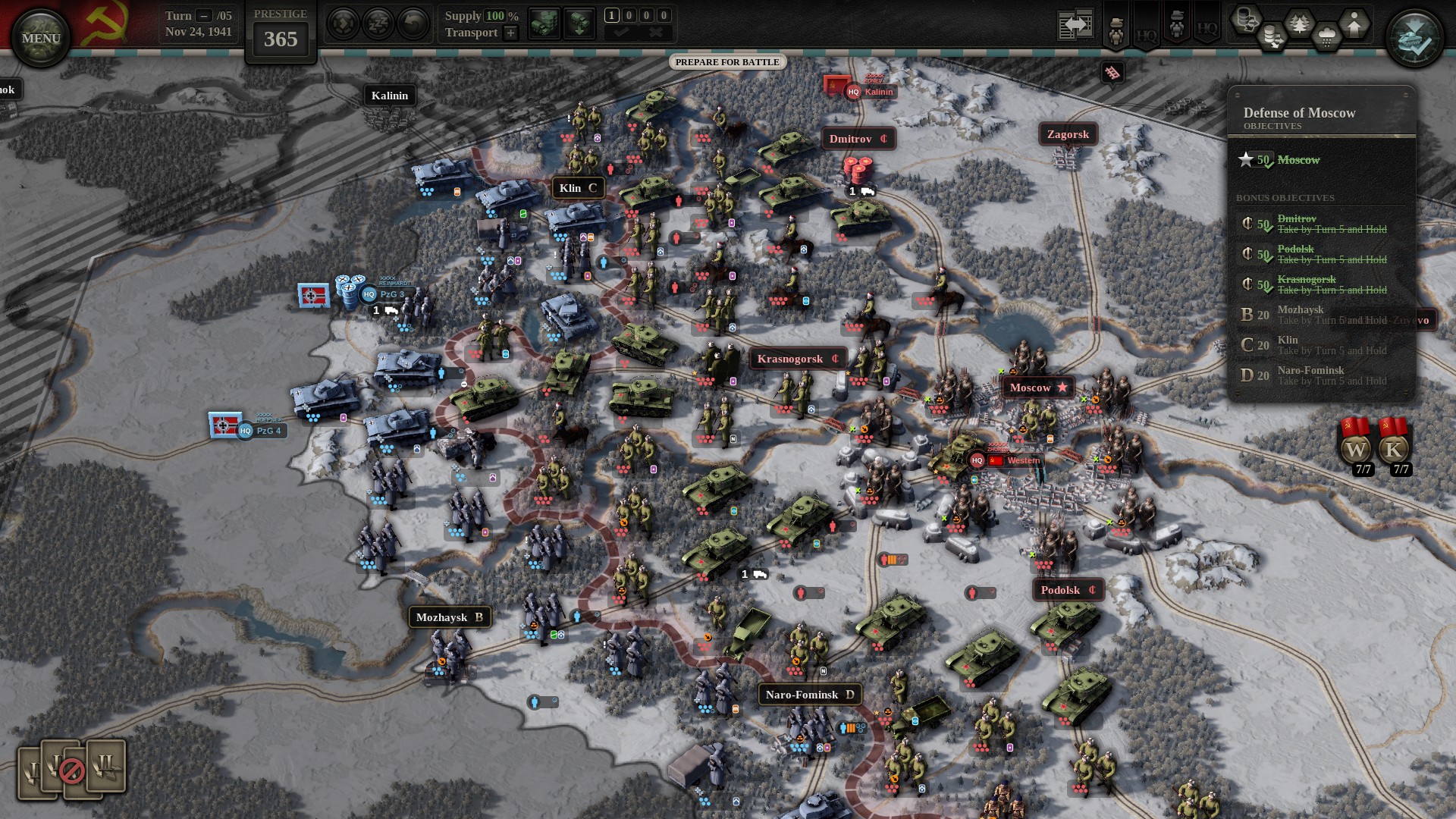
^ Welcome to the grinder. See if you can defend it with fewer than 600,000 casualties.
This time, you’re the one taking those eye-watering casualties you’ve heard Indy Neidell talk about. You’ll be the one pushing the more replaceable rifle divisions in the path of panzers to either exhaust or delay them. You will live, always, under the threat of an unspotted armored – or mechanized or merely motorized – unit pouncing you from the fog of war.
And you’ll win.
You’ll isolate those insolent panzers. You’ll surround them, pin them, and consume them. You will lose troops at every step of the way, but you’ll break the German war machine. Soon, you’ll be the one encircling formations and pushing into the enemy rear. Though it will take wading through pools of blood, you’ll win.
The chance to set history right
Sometimes, you’ll win harder and stronger and stranger than history did. Unity of Command 2 isn’t about just replaying history: while the main objectives and their timers challenge you to take locations as fast or faster than it was possible historically, the optional objectives exist so that you could strike even bolder and take paths not taken.
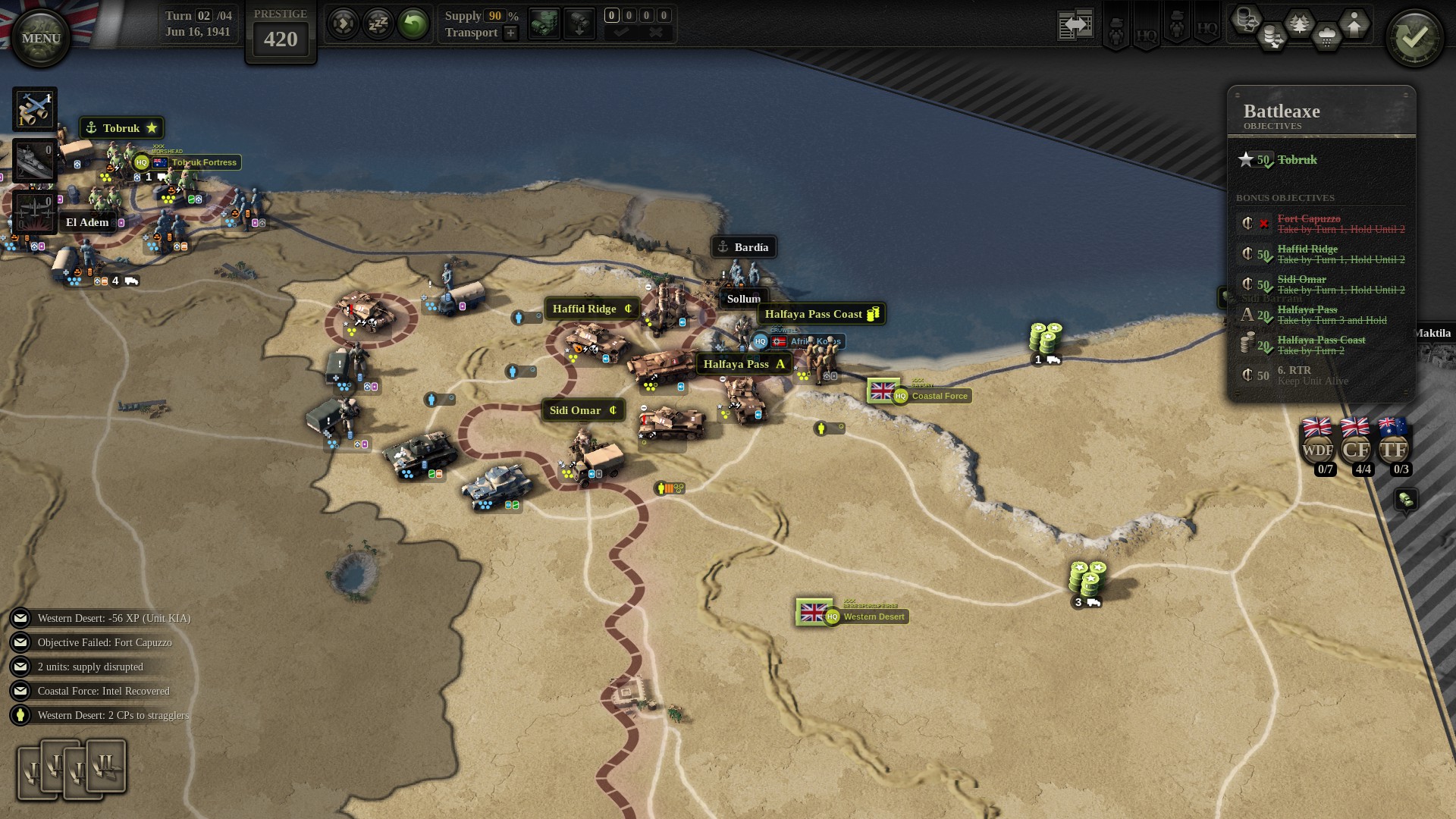
^ I’m sure Tobruk will be fine.
As such, the DLCs come with plenty of alternate history tracks taking you on a tour of “what if” campaigns of WW2. In fact, the Kursk DLC gives the Germans two alternate history tracks, one of which will bring you back to the Mediterranean. These campaigns will be much harder, the game makes no bones about it They’re very much for those seeking to have more replayability value than just trying to see if you can score on the missions better.
In the end, my probably biggest complaint about the Unity of Command 2 DLCs has to do with the core structure of the campaigns. You upgrade your HQs between campaign chapters – this can never be truly taken away (unless your HQ gets overrun or something – that’s always a signal to restart for me). You can level up, reinforce and attach specialists to units within missions. Both of them cost the same resource, but the units can be lost on the battlefield much more easily.
Still, you can avoid destruction on the battlefield. What you can’t outplay is the campaign itself taking your units away. It’s understandable – some losing battles may be too hard to simulate, especially if a specific division gets famously destroyed in it – but it is not exactly fun. It’s less of an issue in the Soviet campaigns where you have too many units to actually memorize or get attached to, but it still smarts.
More, please
To sum it all up, I love the Unity of Command 2 DLCs. All of them are a treat, adding new campaigns, new unit models, new support specialists and more. I may have never scored a gold medal for any of them – too many mission retries – but I’ve had fun every time. I can’t wait to crush the Courland Pocket in 1944!”

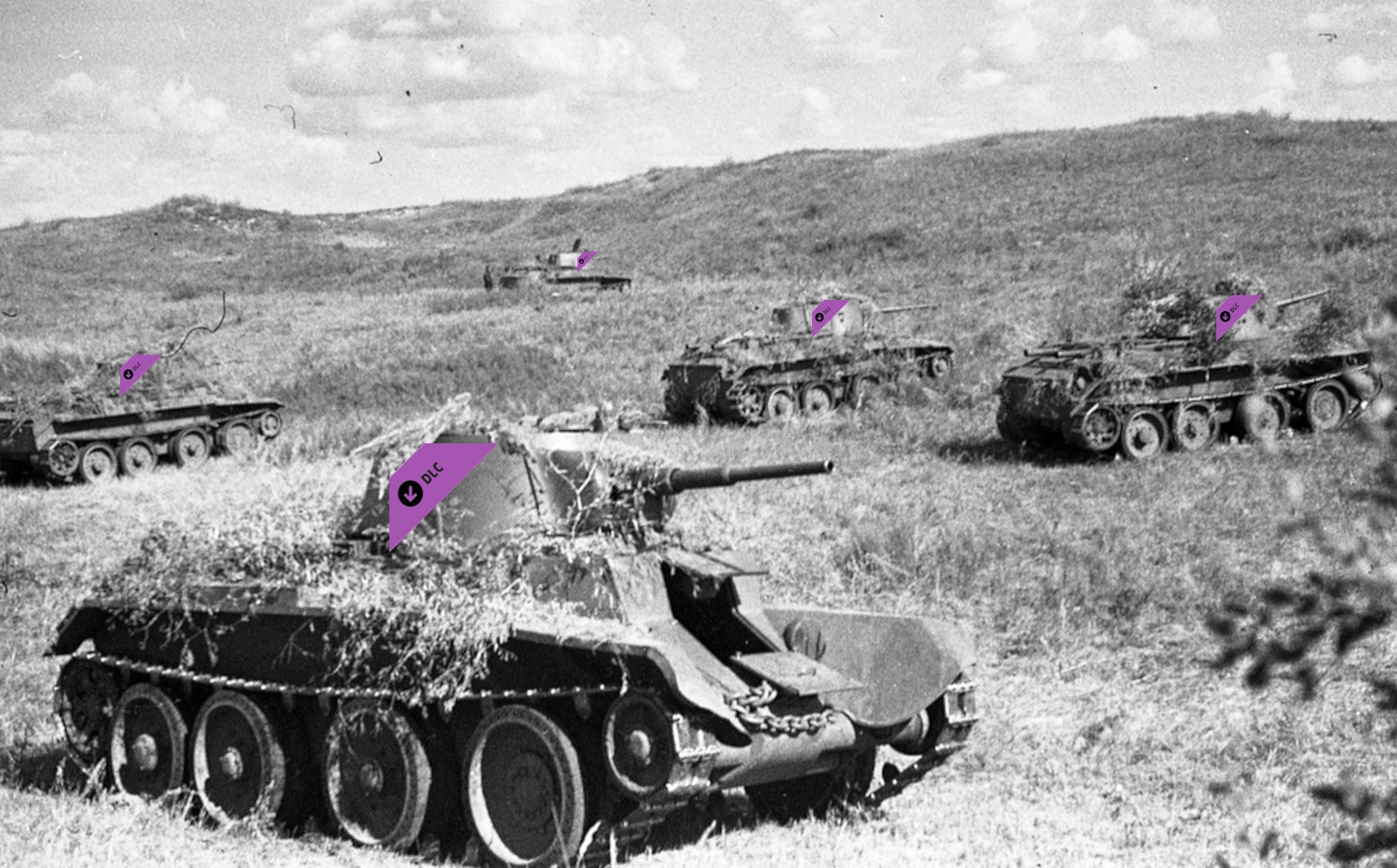
Nice article, thanks.
Put me into the “mission timer ruined the game for me” camp, though. UoC is so elegant otherwise, but I just won’t be rushed when I’m meant to have fun.